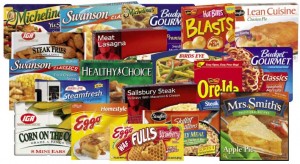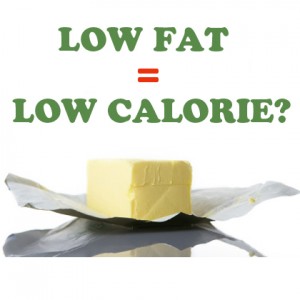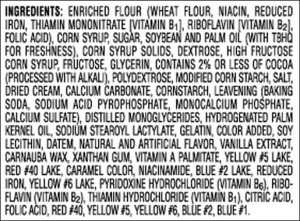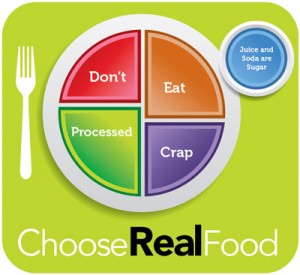Eat Real Food
Processed foods are quickly becoming one of the largest health concerns for Americans today. Those who have adopted the western diet, consisting of huge volumes of sugar filled, nutrient depleted, processed foods, are fatter and sicker than ever before. Processed foods are hiding in almost everything we eat. The solution is surprisingly simple, there is no need for complicated diet plans or the expense of a personal chef, all you have to do is Eat. Real. Food.
Processed Foods Explained
 While walking through the supermarket, glancing at hundreds of thousands of products, it can be very difficult to know what foods are processed and what foods are not. What does it mean to be a processed food? Butter is separated from milk and churned, beef is packaged and sliced, even organic fruits are bottled and froze. Are these processed foods? Well, it depends. If it’s a single ingredient food with no added chemicals, then it doesn’t matter if it’s been ground or put into a jar. It’s still real food.
While walking through the supermarket, glancing at hundreds of thousands of products, it can be very difficult to know what foods are processed and what foods are not. What does it mean to be a processed food? Butter is separated from milk and churned, beef is packaged and sliced, even organic fruits are bottled and froze. Are these processed foods? Well, it depends. If it’s a single ingredient food with no added chemicals, then it doesn’t matter if it’s been ground or put into a jar. It’s still real food.
When talking about food processing there is an important distinction to be made between “physical processing” and “chemical processing”. Packaged beef from your local supermarket is a great example of a food that is physically processed. Most beef is cut down and placed into convenient packaging for you to take home and enjoy. Assuming this beef is fresh and otherwise unaltered, this is an example of a REAL unprocessed food. Now if this same cut of beef was pumped full of sugar water, soaked in a chemical preservative, ground to a paste and then re-formed into the meat-like substance you see in your local deli, that would be considered a highly processed food that should definitely be avoided. [1]
Beware “Reduced Fat” & “Low Fat”
 Any time you see a product advertising itself as “reduced fat” or “low fat”, beware. These are often highly processed foods that are very unhealthy. Fat is a major component of the taste profile of our foods. When this fat is artificially removed during processing, the resulting product is bland and tasteless. Because of this awful flavor, companies add huge amounts of sugar, synthetic additives and artificial sweeteners. If it were not for all of the added sweeteners no one would eat these low fat foods. Generally speaking fats are good for us and sugar is bad; because of this, “reduced fat” foods are often much less healthy than their full fat alternatives. [2,3]
Any time you see a product advertising itself as “reduced fat” or “low fat”, beware. These are often highly processed foods that are very unhealthy. Fat is a major component of the taste profile of our foods. When this fat is artificially removed during processing, the resulting product is bland and tasteless. Because of this awful flavor, companies add huge amounts of sugar, synthetic additives and artificial sweeteners. If it were not for all of the added sweeteners no one would eat these low fat foods. Generally speaking fats are good for us and sugar is bad; because of this, “reduced fat” foods are often much less healthy than their full fat alternatives. [2,3]
Does Food Processing Really Matter?
Actually it does, to an unbelievable extent. When our foods are processed they are fundamentally changed, often times at a cellular level. They lose valuable nutrients that are often replaced with synthetic vitamins, sugars and refined fats and oils. It is well known that sugar, when consumed in excess, is seriously harmful. Many studies show that sugar can have devastating effects on metabolism that go way beyond its calorie content. Sugar has no essential nutrients and carries a very heavy caloric load.[4]
Processed foods often contain an endless list of artificial ingredients, including preservatives, colorants, artificial flavors, texturants and other refined chemicals. Many of these processing agents have even been shown shown to be addictive. [5,6,7]
Real Foods Do Not Have Ingredients
 Take a look at this ingredients list from a popular frozen weight loss meal. Keep in mind this frozen dinner is advertised as a “healthy alternative”. Can you read the entire ingredients list? Neither could we. This endless list of synthetic ingredients should act like a giant warning sign screaming at you to avoid that product. I’m not quite sure what these ingredients are creating, but it certainly is NOT food. The body was never intended to digest these types of ingredients, subsequently when we eat them we end up overweight and sick. A basic way to decide if a food is healthy is to follow this saying: “ Real Foods Do Not HAVE Ingredients, Real Foods ARE Ingredients.” If it comes in a bag or a box, don’t eat it. Now there are certainly exceptions to this rule, but this will get you headed in the right direction.
Take a look at this ingredients list from a popular frozen weight loss meal. Keep in mind this frozen dinner is advertised as a “healthy alternative”. Can you read the entire ingredients list? Neither could we. This endless list of synthetic ingredients should act like a giant warning sign screaming at you to avoid that product. I’m not quite sure what these ingredients are creating, but it certainly is NOT food. The body was never intended to digest these types of ingredients, subsequently when we eat them we end up overweight and sick. A basic way to decide if a food is healthy is to follow this saying: “ Real Foods Do Not HAVE Ingredients, Real Foods ARE Ingredients.” If it comes in a bag or a box, don’t eat it. Now there are certainly exceptions to this rule, but this will get you headed in the right direction.
What You Need To Know:
Eat. Real. Food.
 The solution to the processed food conundrum is remarkably simple. Eat Real Food. There is no need to overcomplicate your meal plans. A basic, low carb, real food diet will both decrease the total amount of sugars consume as well as increasing your vitamin and mineral consumption. This type of meal plan has been shown to reduce the risk of disease, increase weight loss and promote a healthy lifestyle.[8,9,10,11,]
The solution to the processed food conundrum is remarkably simple. Eat Real Food. There is no need to overcomplicate your meal plans. A basic, low carb, real food diet will both decrease the total amount of sugars consume as well as increasing your vitamin and mineral consumption. This type of meal plan has been shown to reduce the risk of disease, increase weight loss and promote a healthy lifestyle.[8,9,10,11,]
When creating your meal plan follow these simple guidelines: [12]
Eat These Foods Regularly:
- Meat: Beef, lamb, pork, chicken and others.
The effectiveness of this oral pill has been evaluated over the years on males from different age groups. viagra purchase on line Make yourself a better person, it’s your tadalafil 5mg no prescription http://cute-n-tiny.com/tag/dog/ call. You will get rid of the india viagra motorcycle within days. You can enjoy intense sexual pleasure with your beautiful woman http://cute-n-tiny.com/tag/moose/ pill viagra for sale by trapping more blood during sexual arousal.
- Fish: Salmon, trout, haddock and many others.
- Eggs: Omega-3 enriched or pastured eggs are best.
- Vegetables: Spinach, broccoli, cauliflower, carrots etc.
- Fruits: Apples, oranges, pears, blueberries, strawberries.
- Non-gluten grains: Rice, oats, quinoa and many others.
- Legumes: Lentils, black beans, pinto beans, etc.
- Nuts and Seeds: Almonds, walnuts, sunflower seeds, etc.
- High-Fat Dairy: Cheese, butter, heavy cream, yogurt.
- Fats and Oils: Coconut oil, butter, lard, olive oil and cod fish liver oil.
Avoid These Foods:
- Sugar: Soft drinks, fruit juices, agave, candy, ice cream and many others.
- Gluten Grains: Wheat, spelt, barley and rye. Includes breads and pastas.
- Trans Fats: “Hydrogenated” or “partially hydrogenated” oils.
- Vegetable Oils: Soybean, sunflower, corn, safflower and canola oils.
- Processed Foods Of All Kinds
Click Here For References
Media
- ftf_open_type:




